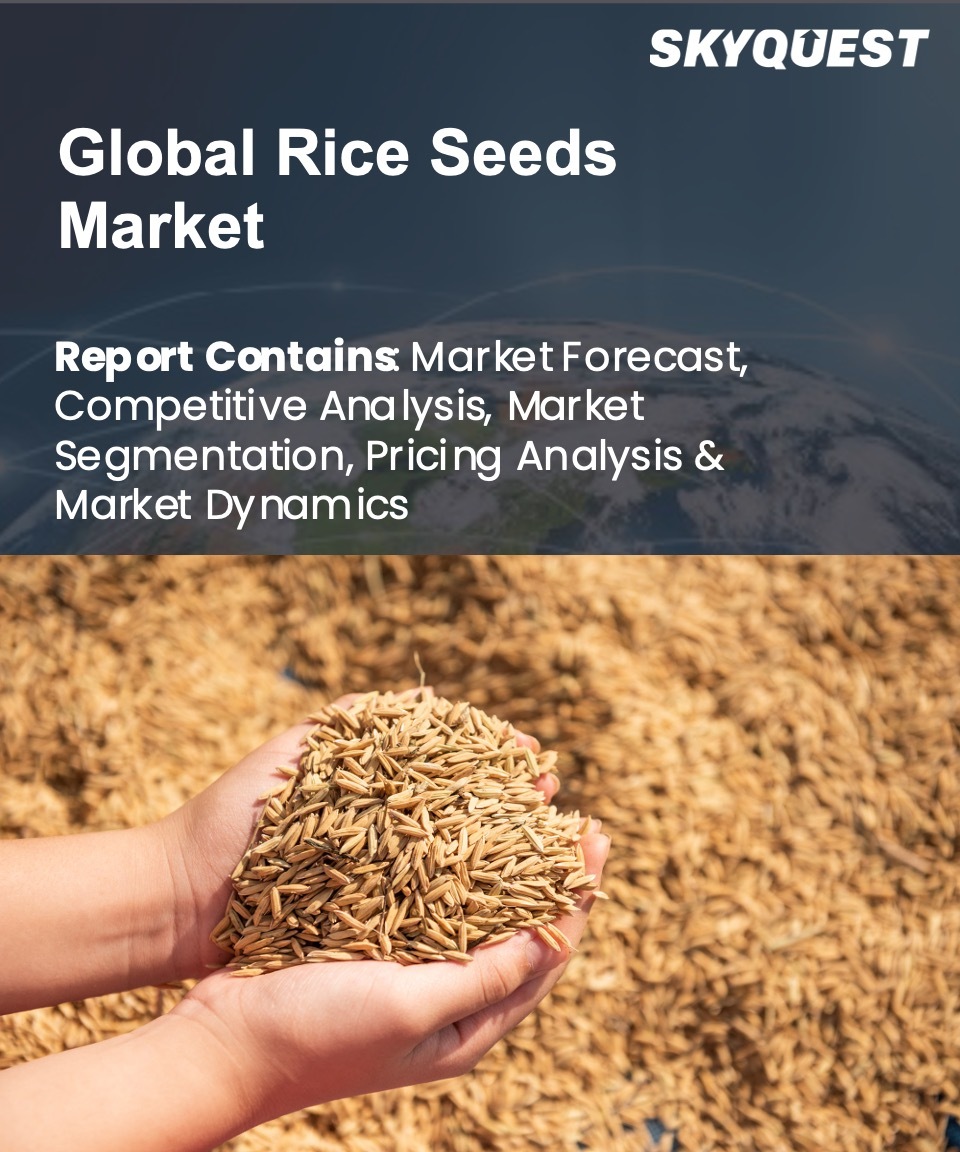
Product ID: SQMIG30H2075

Report ID:
SQMIG30H2075 |
Region:
Global |
Published Date: April, 2024
Pages:
157
|
Tables:
114 |
Figures:
77
Rice Seeds Market size was valued at USD 6.69 billion in 2019 and is poised to grow from USD 7.14 billion in 2023 to USD 12.8 billion by 2031, growing at a CAGR of 6.7% in the forecast period (2024-2031).
Rice is made from the seed of the grass Oryza sativa, sometimes known as Asian rice, or the less common Oryza glaberrima (African rice). Although the phrase may sometimes be used to refer to wild or uncultivated variants of Oryza, wild rice is typically used to refer to species of the genera Zizania and Porteresia.
In various Asian nations, including India, China, Vietnam, and Malaysia, brown rice consumption has increased during the past several years. Brown rice is far healthier than regular commercial alternatives, according to a medical study. In addition to having 218 calories per cup, brown rice also has 44 grams of carbohydrates, 3.5 grams of fiber, 1.8 grams of fat, and 5 grams of protein. Additionally, it contains vitamin B1, B3, B5, B6, selenium, iron, magnesium, phosphorus, zinc, copper, manganese, and vitamin E. Due to its high fiber and low-calorie content, this variety of rice is strongly advised for diabetes patients as an alternative to ordinary rice.
The market is expanding more quickly as a result of the rising cost of premium seeds. One of the causes is the help provided by public and private entities to farmers and agriculturalists. The market is being further improved by the expanded selection of hybrid rice seed alternatives as well as the simple accessibility of agricultural loans, contract services, pesticides, fertilizers, and machinery. Rising consumer demand for higher-quality rice crops, rising consumer knowledge of the benefits of eating healthy, rising hybrid crop farming for higher rice production, and an increase in the rate of seed replacement are all factors that are positively affecting the rice seed market. During the anticipated period, the rice seed market would develop at a faster rate due to new technologies and an increase in exports of rice seed types.
US Rice Seeds Market is poised to grow at a sustainable CAGR for the next forecast year.
Our industry expert will work with you to provide you with customized data in a short amount of time.
REQUEST FREE CUSTOMIZATIONRice Seeds Market size was valued at USD 6.69 billion in 2019 and is poised to grow from USD 7.14 billion in 2023 to USD 12.8 billion by 2031, growing at a CAGR of 6.7% in the forecast period (2024-2031).
Want to customize this report? This report can be personalized according to your needs. Our analysts and industry experts will work directly with you to understand your requirements and provide you with customized data in a short amount of time. We offer $1000 worth of FREE customization at the time of purchase.

Product ID: SQMIG30H2075